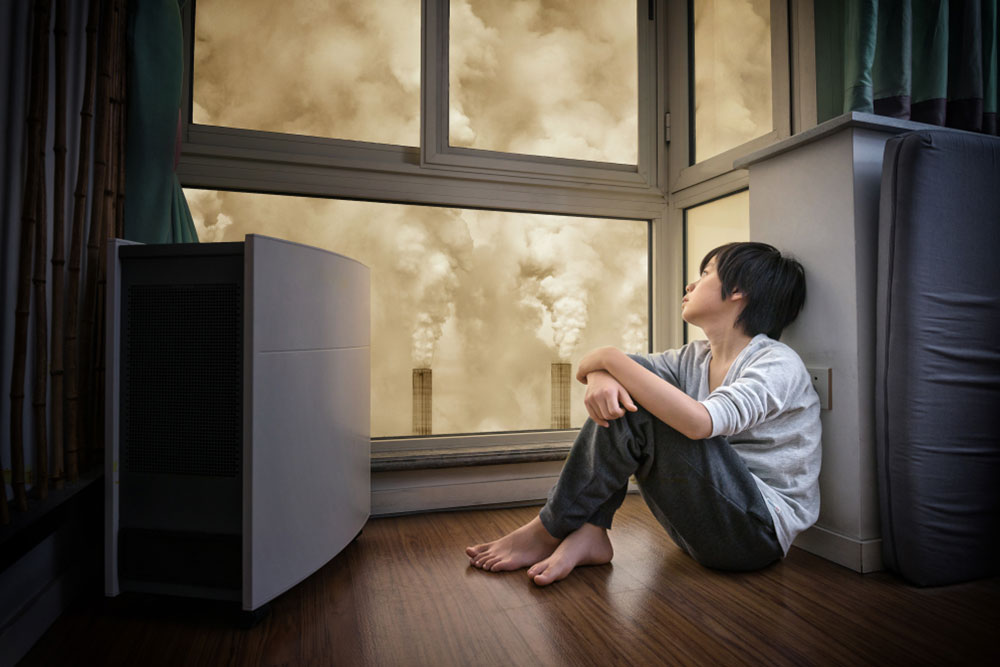The burden of air pollution and related illnesses has increased exponentially in India is a well-known fact. According to a study published in The Lancet Planetary Health in December 2020, titled Health and economic impact of air pollution in the states of India: the Global Burden of Disease Study, 2019, 1.67 million deaths in India in 2019 were attributed to air pollution in India. The majority of these deaths were from ambient particulate matter pollution (the type of air pollution caused by industries, vehicles, firecrackers, etc) and household air pollution. This clearly shows that it’s not just exposure to outdoor pollution that you need to be aware of and avoid. Awareness about indoor or household air pollution is equally important.
Why indoor air pollution is a greater concern now
Everything that’s happened in 2020-2021 indicates that the urgency to tackle household air pollution is now greater than ever. Many studies show that due to the stringent and long-drawn COVID-19 lockdowns in 2020, outdoor air pollution levels have decreased. On the other hand, the same lockdowns have made your home the centre of all your activities, from professional to leisure ones. With greater time spent at home by all members of the family, including children and the elderly—the age groups most susceptible to developing diseases due to air pollution—the exposure to indoor air pollutants has increased, and this can have far-reaching effects on everybody’s health.
A study titled Indoor air quality improvement in COVID-19 pandemic, published in the journal Sustainable Cities and Societies in April 2021, clearly states that poor air quality and air pollutants play a huge role in increasing cases of respiratory diseases. The list not only includes COVID-19 but also other major comorbidities like bronchitis, chronic obstructive pulmonary disease (COPD), asthma, emphysema, cystic fibrosis, and even lung cancer. The study reiterates that while the major pollutants that cause these diseases are generated by activities like fossil fuel combustion from vehicles, power plants, and industrial activities, indoor activities too can generate them in smaller amounts. But if all your activities are now centred at home, wouldn’t it mean that you’re now generating higher amounts of indoor air pollutants? This is the primary reason why tackling indoor air pollution should be on your priority list right now.

The known and the unknown of household air pollutants
Believe it or not, almost all the activities and things that make your home your happy place can also expose you to potential pollutants without your even realising it. Traditionally, the World Health Organization (WHO) and other health agencies consider cooking on an open fire or stove which uses kerosene, wood, animal dung, crop waste, and coal a major source of indoor air pollution, also implying that those dependent on these methods in rural and poorest parts of India are at the greatest risk of diseases stemming from this exposure.
However, studies (like the one mentioned above) show that emissions like particulate matter, nitrogen dioxide, ozone, carbon monoxide, and sulphur dioxide are also generated during household activities like cooking and frying, cleaning activities and religious activities. The fumes created while cooking on a gas stove can be just as harmful as burning incense and candles. Another fact that cannot be denied is that cleanliness and cleaning activities have taken centre stage over the last year. Most cleaning products contain harmful chemicals which are easily aerosolised during the cleaning process. Inhale enough of these during your daily, weekly or monthly cleaning drive, and the effect on your lung health may be just as bad as being exposed to Delhi’s smog.
The American Lung Association goes even further than this by adding more common indoor air pollutants that you may not be aware of. Dust and dust mites in your carpet, bedding, upholstery and curtains release allergens that can cause allergic rhinitis and asthma. Cockroaches produce similar allergens that can be equally harmful. Dampness and mould, which are pretty common during Indian monsoons, can create the perfect environment for spores to grow. These spores, if accidentally exposed to, inhaled or eaten, can have devastating effects on your health as they are hotbeds for viruses and bacteria. Even pet dander shed by your furry best friend can cause you respiratory distress and illness, as it is categorised as a significant indoor air pollutant.

How to reduce indoor air pollution
It’s quite clear then that though indoor air pollutants may not seem like a big problem because they are generated by everyday household activities that are too normal to be noticeable, their cumulative effect on your respiratory health can be quite devastating. Reducing indoor air pollution is, therefore, in your best interest. Here are some methods you can use to tackle this problem:
• Make sure your home has proper ventilation, and ensure that your air conditioner, kitchen chimney, air filters, and exhaust fans are serviced regularly.
• Use paints, craft supplies, incense, aromatherapy candles and chemical cleaning products in well ventilated areas because these generate fumes and aerosolise harmful chemicals.
• Keep your home clean, avoid clutter, and keep both trash and water storage covered. This will prevent mould, dust mites, bacteria, and viruses.
• Ensure that your curtains, carpets, bedding, mattresses, sheets, and upholstery are all dry and clean. When you wash and clean them, dry them out in the sun properly.
• If you have a pet, give them a regular bath and keep their bedding clean. This will help prevent dander.
• Avoid using air fresheners because they mask odours that you should be eliminating, not covering up.
• Store all cleaning products and chemicals separately and safely so that they can’t contaminate the air or your food. Clean all surfaces with a microfiber cloth and switch to natural cleaning products.
• Indoor plants are pretty, but it’s better to keep them on a balcony or outdoors since they can be hotbeds for mould, insects and worse.